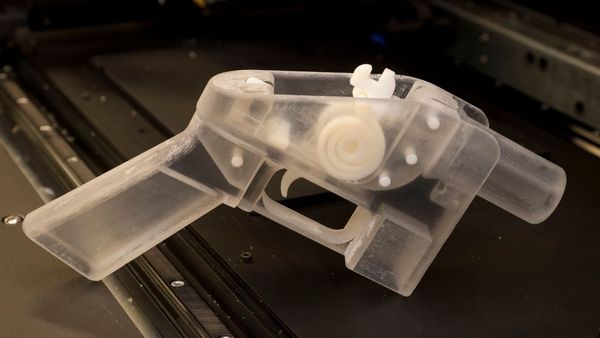As inflation rose higher than expected during 2022, the rise in the cost of living has significantly impacted Australians in many different areas of their lives.
The official Consumer Price Index (CPI) figures for 2022 were released on Wednesday, and they increased higher than economists were tipping.
Use the interactive below to complete the line graph and see how the CPI has risen during the past four years.
The CPI is broken down into 11 key categories that consumers spend money on.
Let's unpack those categories and hear from some of the many Australians struggling with cost-of-living pressures.
You can jump to the category you want to see with the links below.
- Food and non-alcoholic beverages
- Alcohol and tobacco
- Clothing and footwear
- Furnishing, household equipment and services
- Housing
- Health
- Transport
- Communication
- Recreation and culture
- Education
- Insurance and financial services
Food and non-alcoholic beverages
Gold Coast resident Andy says he can no longer afford a typical grocery shop because Jobseeker Payments haven’t kept up with inflation.
“I am foregoing decent food at the moment just to survive — and then I run out of money,” Andy says.
In December 2021, the CPI for food and non-alcoholic beverages was at 3.5 per cent.
Use the slider to see how much the cost of these items has increased during a year.
Alcohol and tobacco
in July, Michael from Western Australia told the ABC that he "hasn't had a beer in months" because it's just too expensive.
The cost of alcohol and tobacco was at 1.1 per cent in December 2021, use the slider to see how it rose in 2022.
Clothing and footwear
Jade and her husband work in the mines in Western Australia.
She has an above-average income but says cost-of-living pressures are impacting everyone.
With three young children in private school, Jade has turned to department stores and winter sales to buy clothes for her kids.
"While less well-off people are certainly feeling the most stress and bearing the brunt of these rises, I think everyone in the community is feeling it to some extent," Jade says.
In December 2021, the CPI for clothing and footwear was at -0.3 per cent.
Take a guess at what the CPI for this category was in 2022.
Furnishings, household equipment and services
Sydney renter Jessica was impacted by the Hawkesbury-Nepean flooding late last year.
She says her house has had issues with mould since the floods and she's needed to replace furniture, clothing, and her children's toys.
But replacing these items can be costly.
Use the interactive below to complete the line graph and see how the CPI for furnishing, household equipment and services has risen during the past four years.
Housing
Jessica, who has been struggling with mould in her rental property, has looked at more than 35 rental homes to move her family, and she says she has viewed hundreds online.
"Financially, we just can't afford it," Jessica says.
She says she has been placed on a priority housing list, but thousands of others are in the same position.
In December 2021, the CPI for housing was at 4 per cent.
Take a guess at what the CPI for this category was in 2022.
Health
NSW resident Meredith says paying top dollar for mental health care is “extremely crippling” when you’re on the disability support pension or other benefits.
“Yet, some pay and sacrifice food and other essentials,” Meredith says.
“There needs to be something to help people afford treatment or live lives that are hopeless with little chance of improving life and entering the workforce.”
In December 2021, the CPI for health was at 3.3 per cent.
Use the slider to see how much the cost of these items has increased during a year.
Transport
Fuel prices have become restricting for SA senior Kelvin, so he has switched to catching the train to work.
In SA, Seniors Card members travel for free.
Kelvin says he's saving about $120 a week by doing this, but it's not an option for everyone.
In December 2021, the CPI for transport was at 12.5 per cent.
Take a guess at what the CPI for this category was in 2022.
Communication
Jackie, who lives in Victoria, says she and her two teens have never had internet at home apart from the use of phone data.
"It's a luxury that I just can't afford after rent, petrol, food and utilities," Jackie says.
She says the family use their phone data to hotspot to the kid's laptops to study.
In December 2021, the CPI for communication was at 1.3 per cent.
Use the slider to see how much the cost of these items has increased in a year.
Recreation and culture
For Jackie and her two kids, birthdays and Christmas are difficult.
“I try to save but it's never enough and if friends ask us out for tea it's very rare for us to be able to go, even if it's just out for coffee,” Jackie says.
She says her family can’t afford the luxury of television subscriptions or “pay TV”.
Use the interactive below to complete the line graph and see how the CPI for recreation and culture has risen during the past four years.
Education
Perth resident Gary pays for his primary school-aged grandchild's booklist and school uniforms.
He says uniforms have cost him in excess of $300 while the book list was more than $100.
Gary had hoped that ABSTUDY, a payment program for Aboriginal or Torres Strait Islander students, would assist, but it isn’t available for primary school-aged children.
"The booklist for this year was $180 for year four," Gary says.
"Anyone who has a concession card should receive help for the expenses of educating our children."
In December 2021, the CPI for education was at 0.6 per cent.
Use the slider to see how much the cost of these items has increased in a year.
Insurance and financial services
Lena’s house in Mullumbimby, NSW, was flooded last February.
While she had insurance and was paid out in full, a shortage in tradies means the house is yet to be completely fixed.
“Our insurance-paid rental runs out in mid-March and we will have to move back regardless of whether it’s finished or not because we can’t afford to pay rent and mortgage,” Lena says.
In December 2021, the CPI for insurance and financial services was at 2.2 per cent.
Take a guess at what the CPI for this category was in 2022.
This article is based on submissions from Australians who responded to ABC's call for readers to share their struggles with cost-of-living pressures.
You can share your own story with the form below.







